Traditional Vs Convenient
Chinese egg noodles are typically made from wheat flour, eggs, water and salt. The eggs are added in the ingredients to help making the noodles chewier, richer and also adds flavour and color.
Some recipes call for lye water.
Lye water effects the noodles in a way that it makes the noodles more yellow and chewier in texture. You can find lye water in Asian stores but where I live, unfortunately I have never seen it available anywhere.
To create the same effect without lye water, some recipes call for baking the baking soda on a very low temperature for a long time. I rather not go into the chemical and technical side of it (I am no expert) but by baking it like that it leaves the baking soda with its alkaline attribute, which is looked for in making chewy and more yellow noodles.
Today I thought I would share a simple Chinese egg noodles recipe that personally for me, is less hassle and tastes equally delicious.
My Version
I love noodles. If you have read several of my noodle recipe posts, you will know that it's not easy (and cheap) to find Asian ingredients in my city.
So depending on my mood and time availability, I would either use spaghetti or dry egg noodles.
And when I'm feeling a bit fancy, I like to make my own egg noodles.
The thing is, it's very easy. You just need to spend some time with it. With just a bit of planning ahead, you'll be enjoying some delicious homemade bouncy egg noodles.
Flour
I'm using bread flour because bread flour always makes a dough more elastic and chewier end products compared to all purpose flour.
We want our Chinese egg noodles to have that chewy texture. So instead of all purpose flour, use bread flour.
I also like to weigh my flour instead of using cup measurement. Personally for me, there's just too many ways of filling a cup with flour. Do you press it, shake it etc. Weighing is more precise.
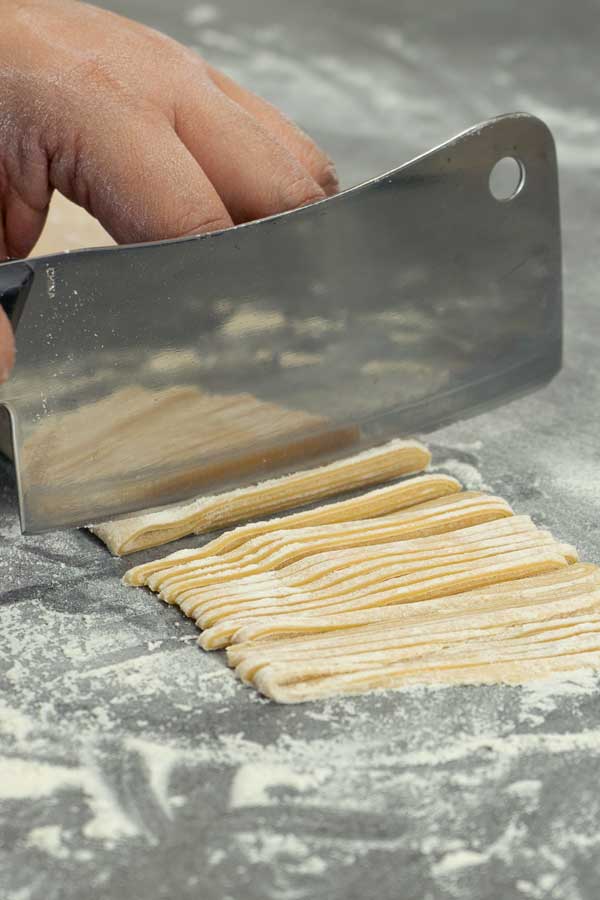
📮 Save this recipe for later!
And it's important because:
The ratio of flour to liquid is 2:1
For these reasons also, I'm giving this recipe in ounces and grams.
Egg And Water
I'm using 1 large egg per 4.6 oz (130 gr) of flour and I add water to get the weight of liquid to 2.6 oz (65 gr).
So whatever amount of flour you use, the total weight of egg and water should be half of the flour.
Lye Water And Baking Soda
There's no lye water in the Asian store in my city.
And I don't feel like making the baked baking soda also. Haha!
What I notice is, you can incorporate the taste and a bit of texture that lye water or baked baking soda gives to the Chinese egg noodles by boiling the noodles with baking soda.
Yep.
Isn't it easier? For me, it is!
So what I do is boil around 6 ¾ cup of water (1.7 liter) together with some generous salt and 2 teaspoon of baking soda.
And then I boil my noodles like always.
What you need to take note in this step is, adjust the amount of baking soda according to your taste. Start with 1 teaspoon and see if you like the taste and texture. Adjust accordingly.
As for me, 2 teaspoon is the sweet spot.
Kneading
Since this is a hard and stiff dough so a bit of work is needed. What I do is knead for 10 minutes, and leave the dough to rest for 30 minutes. Then I bash the dough with my rolling pin for another 10 minutes and leave it to rest for another 30 minutes.
The long resting time is to let the dough relax and makes it easier to work with.
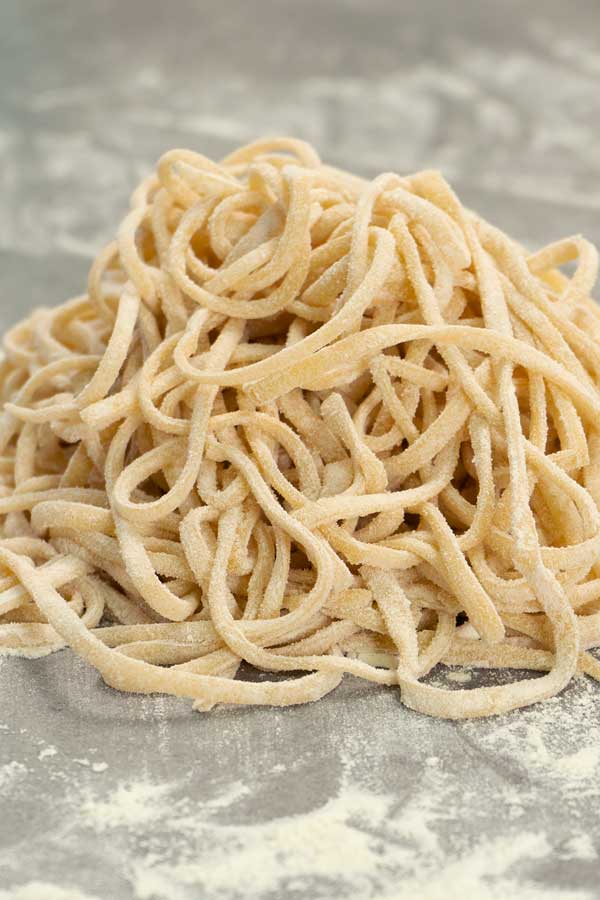
You can see the details on kneading, cutting and fluffing up the noodles in the video below.
Well there you go. A simple way to make Chinese egg noodles at home. It really is easier than you think.
Recipes To Try With Them
These homemade noodles are great to use for these recipes:
Video
📖 Recipe
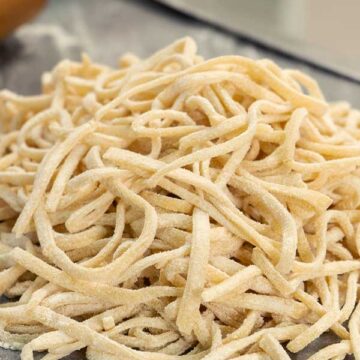
How to Make Chinese Egg Noodles
Ingredients
- 1 large egg
- enough water
- 4.6 oz bread flour (130 gr)
- ½ teaspoon salt
Instructions
The Noodles
- Crack and egg into a bowl and add enough water to get 2.6 oz (65 gr). Mix a bit and set aside.
- In another bowl, mix flour with salt. Then pour in egg mixture and mix. Using your hand, start kneading until everything comes together around 10 minutes. It's a stiff and hard dough, give it time.
- Make into a square, more or less and cover the dough with cling film. Rest for 30 minutes. Then bash using a rolling pin for another 10 minutes. This will help develop gluten without hard kneading. Cover with cling film and rest for 30 minutes.
- Roll the dough into 1-2 mm thick. Then cover both sides of the dough with generous amount of flour to prevent from sticking. Fold the dough into 4, without pressing it.
- Using a sharp knife, cut into 2 mm strips. Then sprinkle more flour and toss to loosen the noodles.
Boiling The Noodles
- Bring a pot of 6 ¾ cup water (1.7 liter) together with generous salt and 2 teaspoon of baking soda to a boil. Place in the noodles and cook for 2-3 minutes or until fully cooked. Drain noodles and rinse under cold water.
- Drizzle with some oil and toss the noodles together to prevent from sticking. Ready to be used in your favourite recipe. Enjoy!
Notes
- Do not add more water when you see the dough is hard while kneading. It's supposed to be like that. Just keep on kneading and it will come together.
- Weight ratio of flour to egg water is 2:1
- When boiling the noodles, start with 1 teaspoon baking soda and adjust to your liking.
- Yields 7 oz (200 gr) noodles.
- Keep well in the fridge up to 3 days.
Nutrition Facts
The nutrition facts provided are an estimate per serving. Accuracy is not guaranteed.

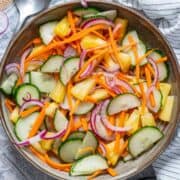
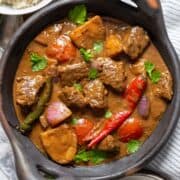


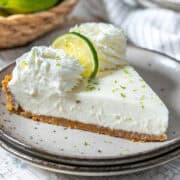


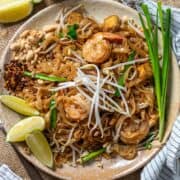



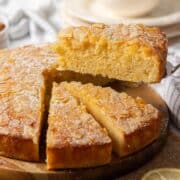
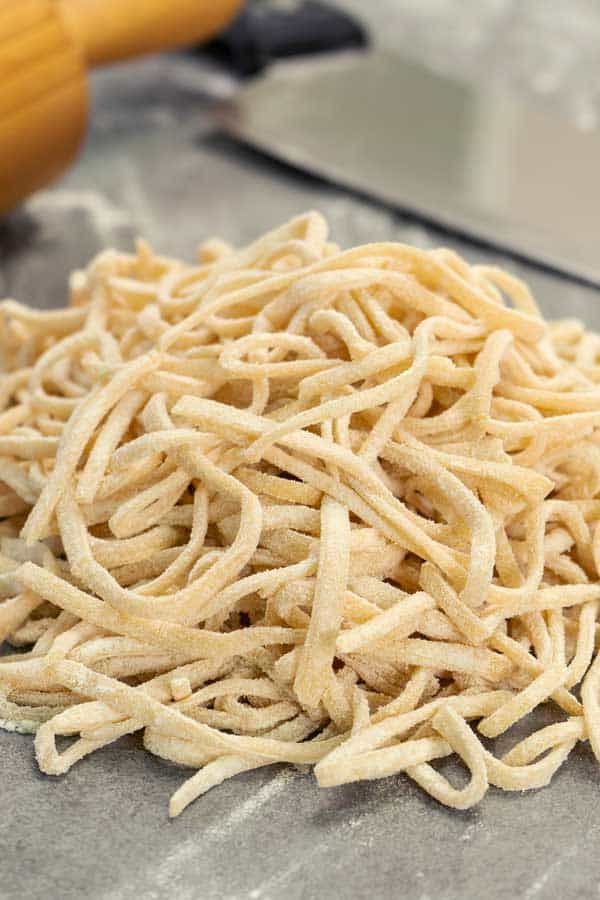
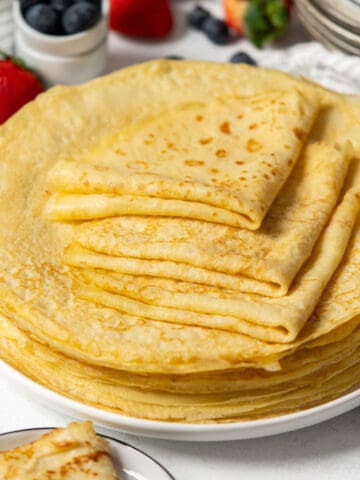
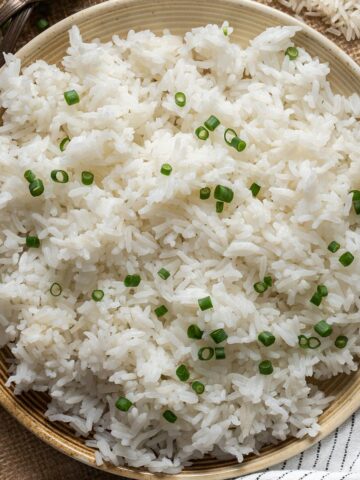
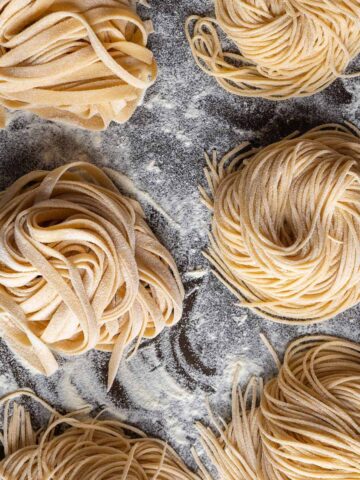

Katherine Pham says
Have you tried kneading with your feet the way udon is made?
Bea says
Although yes that's the traditional way of making udon but personally I find this way is more practical for me 😀
Tina says
Thank you for your recipe! Do these noodles have the same chewiness as the ones used in wonton soup?